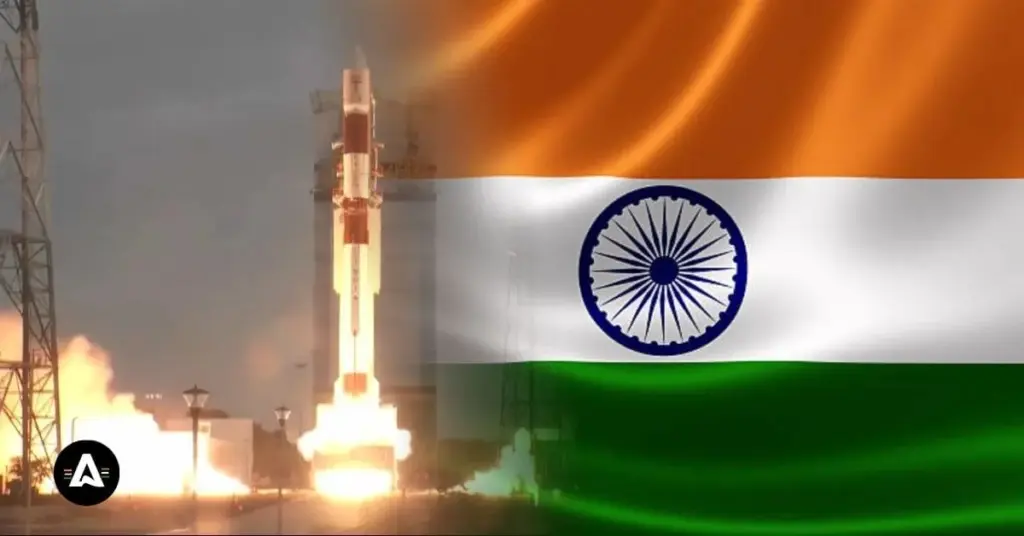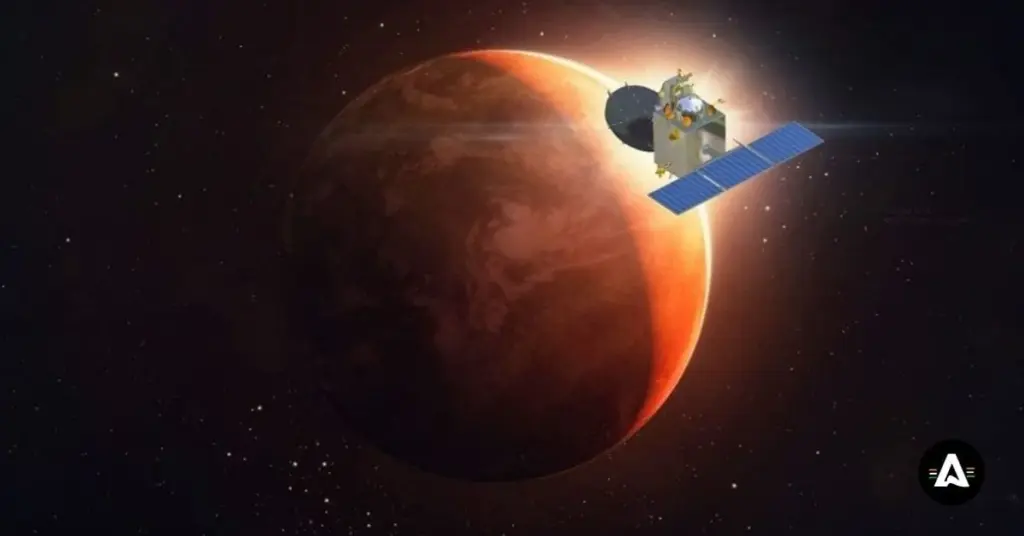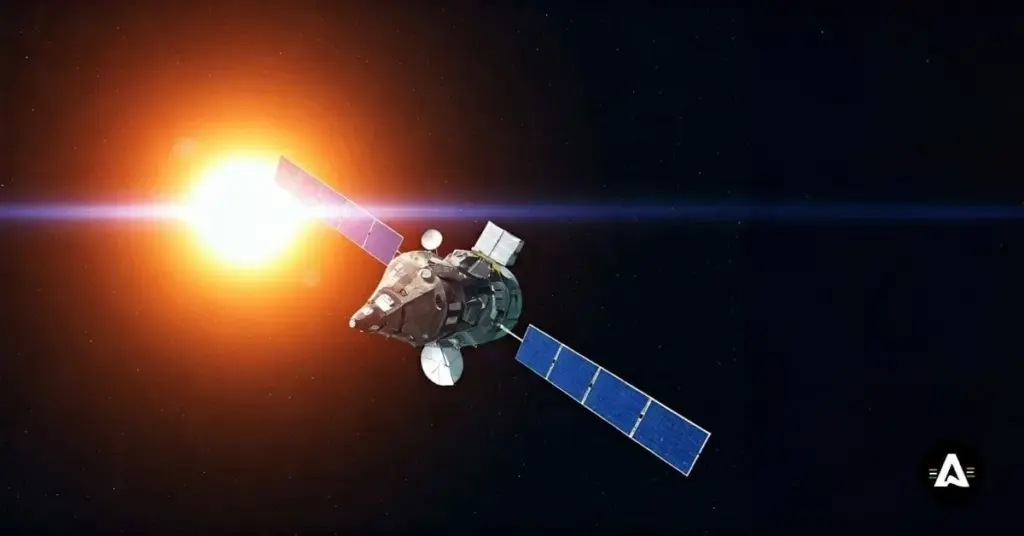ISRO Budget: Achieving More Results with Less
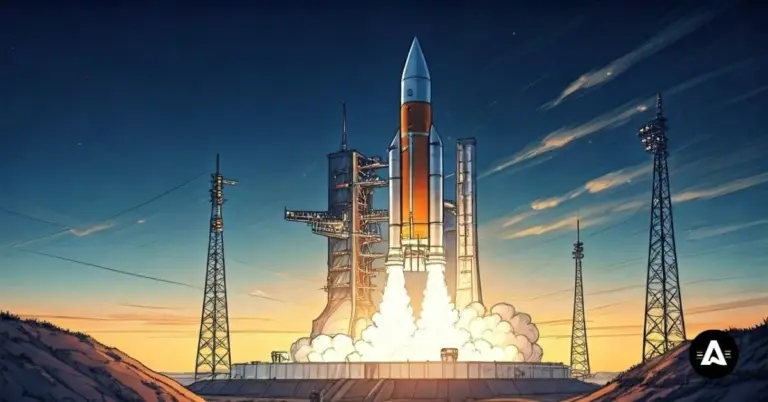
The Indian Space Research Organisation is a top space research organisation. It has reached new heights in space exploration even though ISRO budget is small.
This research organisation works under the ideas of scientist Vikram Sarabhai. ISRO believes in spending less, fixing things on the go, and using what it has in the best way.
ISRO runs with much less money than the European Space Agency and NASA. Still, it has made big things happen, like Chandrayaan, the Mars Orbiter Mission, strong launch vehicles, and important work from ground station support.
A big part of its money comes from the Indian government and by taking on other jobs like commercial satellite launches.
The indian space research organisation’s space program is a good thing for disaster management, gives help to people living in small towns, and supports the military.
Introduction
India’s Indian Space Research Organisation (ISRO) has changed how people see a space research organisation everywhere. It shows that a space program can do big things even with a low budget. With hard work and good ideas, ISRO started small. Then, it went on to become a top-level international space agency. The results it gets are as good as those from others that spend much more money.
This article talks about how ISRO looks after its spending and budget as a research organisation. It explains how the Indian Space Research Organisation keeps getting good outcomes, uses less money, and finds new ways to do things.
The Genesis of ISRO Budget Philosophy
The space research organisation called ISRO has always been careful with money. This started when the research organisation was first set up. From day one, it wanted to use space technology to make life better for people. ISRO had to do all this with a small budget and few resources.
ISRO looked to Vikram Sarabhai for guidance, and he had a big vision for the future. The Indian Space Research Organisation and the Space Applications Centre worked hard to find new ways to be smart with what they had. These main ideas helped this space research organisation grow and make new things for the future. Even though it did not have much money, the space agency became strong and well-known. The research organisation showed that it could do a lot with just a little.
Early Funding and Vision under Vikram Sarabhai
Vikram Sarabhai, who started ISRO, believed that science can do well even if you do not have much money. He wanted to set up a research organisation that could fix problems in the country without spending a lot. He also thought it is important to use homegrown technology to do this.
Most of the money for ISRO Budget, at first, was given by the Department of Space. Sarabhai wanted to use what you have and trust your own ideas. He said do not buy costly stuff from outside if you can make it at home. This saved a lot of money for ISRO but did not hurt the way things worked.
ISRO started to get strong by making sure that each rupee was used in the right way. This smart use of money helped this research organisation do better for the people in India. Vikram Sarabhai had many good ideas that helped ISRO grow. Because of his work, ISRO is now seen as one of the most respected space agencies in the world.
Strategic Prioritization Despite Limited Resources
ISRO’s way is to choose the most important work instead of going for big, flashy things that are not needed. This idea helped them do well when there was not much money. The group knows how to use its funds well. The space missions they pick help the Indian government and all the people in the country the most.
Projects that are not needed right away will either be delayed or skipped. This helps ISRO use their money for plans that help people or science the quickest. For example, the early weather satellites and disaster management systems show that ISRO cares more about real needs than fancy projects.
This way of choosing started a habit in the team. They always pick the right jobs and use their money in a wise way. This helped ISRO be seen as a team that does great space missions and also saves money. The world saw that ISRO could get things done well, even without spending a lot of cash.
Comparing ISRO Budget with Other Space Agencies
You can see the big difference in how the Indian Space Research Organisation (ISRO) and other space agencies spend their money. NASA and the European Space Agency, which are both well-known space research organisations, each get over $20 billion & $9 billion every year to use. ISRO is not like them. This space agency works with less than $2 billion each year. Even with this smaller amount, it does good work by being smart and bringing new ideas to its research organisation.
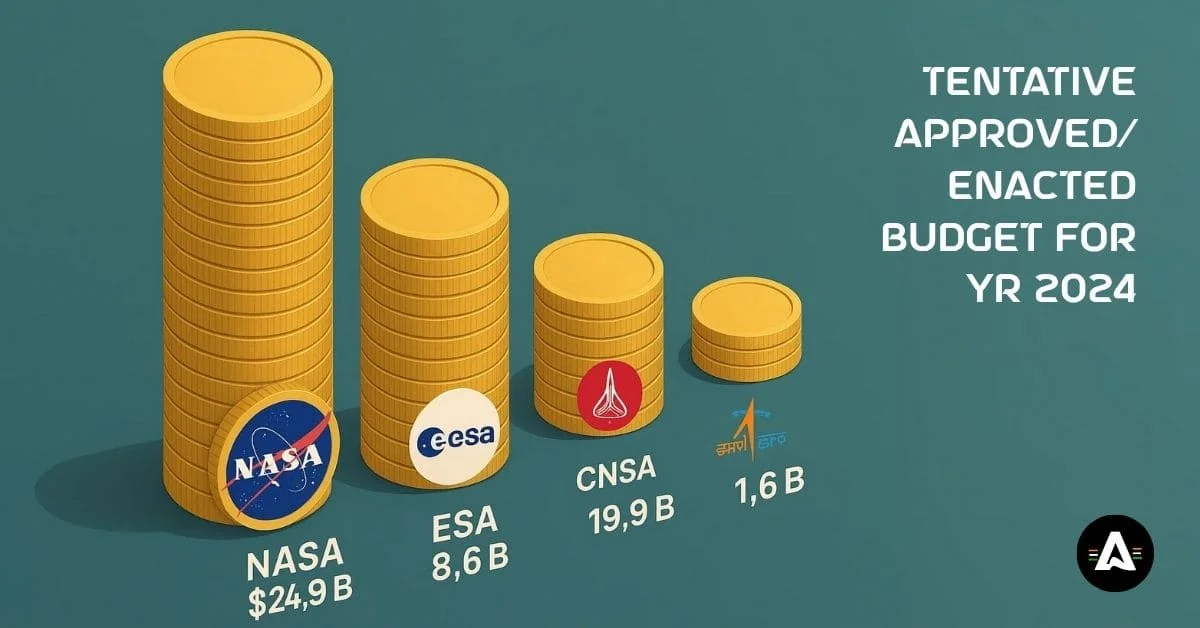
If you look at these groups, you can see how the Indian Space Research Organisation uses smart and creative methods. They save money and get great results. These wins let every one know you do not need to spend too muchin space exploration to get things done. What matters mostin a space research organisation is having good engineering and knowing the best waysto use it.
ISRO vs NASA: Key Differences in Funding
NASA gets over $25 billion every year. This amount is much more than the ISRO budget, which is about $1.9 billion. NASA spends a lot of money to use the latest technology and works on new kinds of research. ISRO still does great work, but it saves money on every project. When ISRO makes plans, it always tries to be careful with the money. It reuses parts whenever it can and picks smaller teams, and these people do not get high pay. NASA, on the other hand, often works with outside companies to build things and buys pricey insurance for each mission. These choices make the costs for NASA rise.
Agency |
Annual Budget (2023) |
Notable Achievements |
|---|---|---|
ISRO |
~$1.5 billion |
Mars Orbiter, Chandrayaan, PSLV |
NASA |
~$25 billion |
Moon Landings, Mars Rovers, Artemis |
This table shows that ISRO can do space missions well, like the mars orbiter. It does not get as much money as NASA, but it still gets good results.
ISRO vs ESA: European Space Agency Comparison
The European Space Agency, or ESA, brings in most of its money from a group of different countries who all work together. This support lets the space agency handle several big missions at once. At the same time, the Indian space agency ISRO mainly works by itself. ISRO is known for spending carefully and picking the most important things to do with what it has.
Even though ISRO Budget is significantly less than ESA, it is able to do just as well or sometimes even better. For example, ISRO has done a good job with missions to the moon. It also makes rockets that are strong and work well. ESA spends a lot of money to use Ariane rockets. On the other hand, ISRO uses its own rockets like PSLV and GSLV, which cost less.
This shows that with good planning and smart building, a space agency can do great things even if it does not have a big budget. ISRO proves it can be right there along with other big space agencies in the world.
Where Does ISRO’s Money Come From?
ISRO is a space research organisation. It gets most of its money from the government. A big part of this money comes through the department of space. The help that the state gives is what keeps the research organisation and its work going.
But now, the Indian Space Research Organisation, or ISRO, also earns money from commercial projects. This space research organisation is known around the world because it launches satellites for other countries and for business groups. ISRO uses its company called Antrix Corporation to do this. The money it gets from these deals is extra on top of what the government gives each year. This helps the research organisation have a bigger budget. It can keep working on its main jobs for the country and not lose sight of what it is made to do.
Indian Government Allocations
The Indian government gives money to ISRO Budget every year through the department of space. This budget is used for the space program. The money helps pay for new missions, making satellites, and making sure everything works.
Every year, the government gives more money to ISRO. This shows that they have more trust in ISRO and the good results it brings in science. The space program also helps a lot with farming and the army. It supports people in their daily work.
ISRO uses this money in a smart way. The Indian government and the department of space give strong support to the work they do. Their plans match well with what people in the country want and need. This shows that taxpayer money is being used well, both for science and to help make life better for everyone.
Commercial Revenue Streams
To help with its budget, the space agency ISRO began offering commercial satellite launches. The space agency uses its business arm, Antrix Corporation, to work with other countries. These countries want cheaper ways to send their satellites into space.
These services help to put ISRO and the research organisation on the world map. ISRO’s launch vehicles, like the PSLV, offer packages at a lower price than most other choices. Some launch options from other countries be very costly. When there is more money from business deals, ISRO does not need to rely only on state funds. It also shows their skill to others.
This way, the research organisation keeps its money in good shape and stays ahead in space exploration.
ISRO Budget Over the Years
ISRO budget has gone up over the years. This rise is there to support the new technology and handle more space missions.
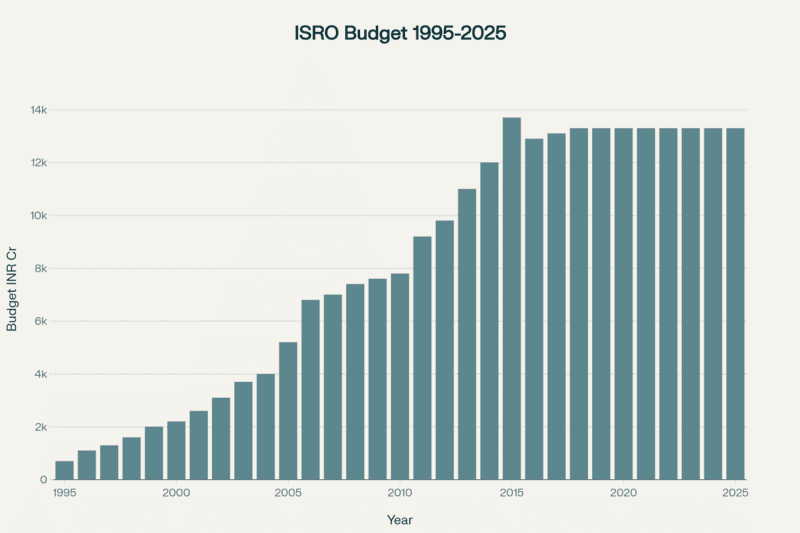
Even though there is more money to use, the research organisation still spends carefully. The Department of Space looks after every extra rupee. They make sure the money helps big science projects the most. This careful way of using money helps the Indian Space Research Organisation keep its good name. It shows people that the space research organisation gets good results from its space missions. They do not need to spend a lot and still do great things.
Growth Trends in Allocations
As time has gone by, the money given to ISRO has gone up along with its big plans. The department of space has worked to see that ISRO gets what it needs. This helps the team try new things, such as sending weather satellites into space and reaching out to other planets.
India wants to use new tech, so the country puts more money into space exploration every year. But, it does not spend more than needed. There are the right investments in things like smart launch vehicles, exploring the moon, and a plan for a new space station. This is a vision that PM Modi supports. All this shows how ISRO is leading the way for good and low-cost growth in space exploration.
This steady rise in funds shows that the country trusts this research organisation. ISRO works to save money but still uses new tech. The group is known for using money carefully and also being good at science.
Budget Challenges and Constraints
Even though ISRO is getting more money, the agency still has hard budget problems. For each space mission, there must be a good balance between the money that is there and the technology that can be used. This helps to stop spending more than what is needed.
For example, ISRO does not use too many tests before a launch. Instead, the agency mostly chooses single missions for each model. This way can bring some risks. But it also helps things go smoother. Good efficiency is very important in how ISRO works.
These limits do not stop ISRO. The team has to be creative and look for new ways to solve problems. Because of this, people around the world know ISRO can do a lot with very little.
Major Missions on Modest Budgets
ISRO’s Mars Orbiter Mission (Mangalyaan) and the Chandrayaan missions show that the Indian space research organisation can handle big space projects very well. These space missions helped us all learn more about the Moon and Mars. They also showed the world that there is a way to save money on space missions while still doing good work. The indian space research organisation has proved that a research organisation can do a lot, even with less.
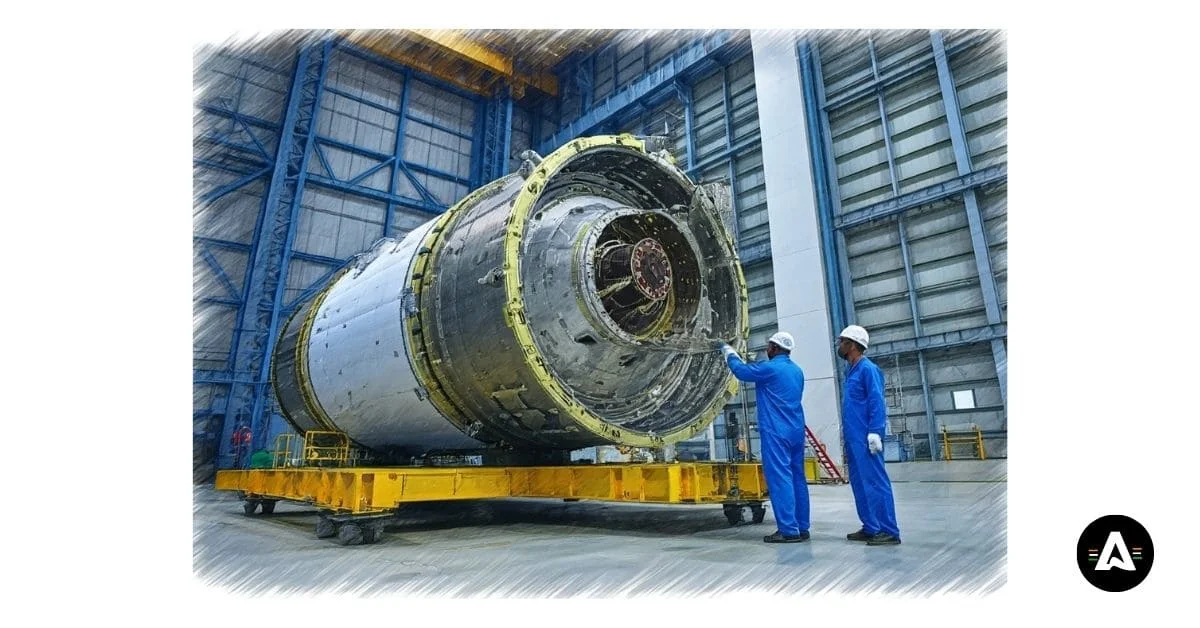
The Indian Space Research Organisation has sent a Mars orbiter to find out more about the atmosphere of Mars. This space research organisation also worked on several projects near the Moon’s south pole and in Earth orbit. By doing all these space missions with not much money, the research organisation showed that you can get good results if you work smart. The important projects, which also included looking at the solar corona, are the reason people see the Indian Space Research Organisation as careful and smart in its work.
ISRO Mars Mission Cost vs Global Missions
Cost-effectiveness is a big part of the Mars Orbiter Mission, also called the Mars Orbiter Mangalyaan. It is a great space probe and stands out in the field. This project is part of India’s space programme. It finished its tough tasks at a much lower price than what most global missions cost. A lot of other space exploration projects in the world need over a billion dollars. But, the Mars orbiter from India was done at under $75 million. This really shows skill in using what was available. The way ISRO made use of every resource brought a lot of praise from space agencies all over the globe. It helped put ISRO at the top for smart and effective space exploration. Using the budget in this smart way not only proves India’s ability. It also gives hope to new countries that want to enter space. Now, they see that big results can be reached for less cost by looking at India’s mars orbiter mission.
ISRO Moon Mission Cost: Lunar Exploration on a Budget
The Chandrayaan program helped ISRO get to the top in the moon exploration field. With Chandrayaan-1, the team made some big news in the space sector. On their first attempt, they found the presence of water molecules on the moon’s surface. This was a big find for everyone, and it was done with only $82 million.
Chandrayaan-2 wanted to go beyond before, as it aimed for the moon’s south pole area on the lunar surface near Shiv Shakti point. This mission used things like the moon impact probe. Even though they did not have all the resources, they still got a lot of data from the mission. What they found was a lot like what NASA got from its Lunar CRater Observation Satellite, even though NASA spent $500 million on that project.
ISRO showed that people can do big things in space by spending less money. The team worked on Chandrayaan and used what they had in the best way. Their work led to good results without costing a lot.
ISRO Spadex Mission Cost : Test Future Tech at Low Costs
The ISRO Spadex mission is another big step forward for space missions, and it does not cost too much. This mission wants to test new ideas in space technology and show how you can make good progress with a small budget. By using local technology and building things in parts, ISRO shows again that you can do a lot even if you do not have much money. The Spadex mission is set to use less than $50 million. This is much lower than what most earlier space missions cost.
Launch Vehicles: Efficient Engineering
ISRO does well because of its launch vehicles. The launch vehicle is low-cost and works every time. A Polar Satellite Launch Vehicle and a Geosynchronous Satellite Launch Vehicle are good examples of this. Each satellite launch vehicle can do its job right again and again.
These smart systems help show how the ISRO Inertial Systems Unit works hard to make sure everything gets done right. With these launch vehicle choices, India can send its satellites into global orbits and not use too much money. ISRO always keeps high standards for how things work. That is why many people around the world want to work with ISRO when it comes to their satellite launch needs.
PSLV: Low-Cost, High Impact
The Polar Satellite Launch Vehicle is a big achievement for ISRO, especially when it comes to saving money. The team uses the first launch pad at Satish Dhawan Space Centre in Andhra Pradesh to send up their missions. This satellite launch vehicle keeps costs down, with each launch being about $20 million. Even so, the PSLV can send many satellites into space in one launch window. The launch vehicle works well for both big and small launches, which helps the space centre use its resources in a smart way.
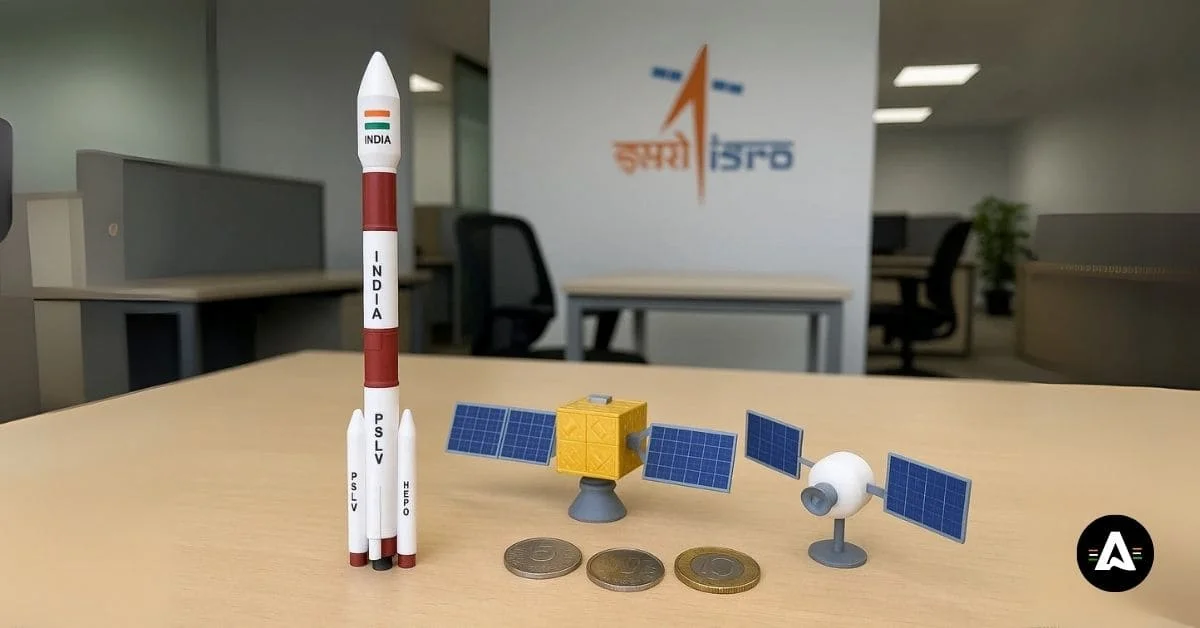
When you look at the market, you can see that this launch vehicle costs much less than the others. For example, the Ariane-5 costs $165 million for each launch. This shows that ISRO is very skilled at what they do. The polar satellite launch vehicle (PSLV) has smart features that help ISRO do space trips, like Chandrayaan, without spending a lot of money. The satellite launch vehicle from ISRO lets them do more at a lower price.
Because the PSLV has a good record, more foreign clients choose it. This makes it a favorite launch vehicle for people from other countries. This also puts ISRO among the top launch vehicle providers in the world.
GSLV and Indigenous Innovations
The Geosynchronous Satellite Launch Vehicle, called GSLV, helped ISRO take on bigger satellite launch vehicle tasks. It let ISRO try more space missions, like the Suborbital Rohini ATV missions. This launch vehicle is part of the next generation launch vehicle projects. The GSLV has its own cryogenic engine. This engine is special. It makes the GSLV work well, even when there is not a lot of money.
GSLV’s launches cost only $30 million. This helps to keep the price down, but it still gives great results. When you look at other launch vehicle choices around the world, you can see how ISRO uses its skills. This allows them to find new ways to do things and stay independent.
There are also new things happening on the ground. For example, the GSLV uses its own launch pads. These launch pads help the geosynchronous satellite launch vehicle do a better job. This makes the satellite launch vehicle even more important in the world of space exploration.
Satellite Programs: Value for Money
Investment in satellite programs always shows the big value that ISRO brings for each rupee spent. These programs are good for things like telecommunications and remote sensing. They also help people all over the country in areas such as agriculture and disaster management. The way ISRO uses its resources is smart, and it builds new technology within the country, too. Because of this, ISRO gets results that are similar to what other, richer countries do in the space sector. ISRO knows how to save money and still make progress in space exploration in India. It shows that a research group can use less money but still do a lot and get great results. This fits well with the idea of doing space exploration in a good and responsible way for the long run.
Remote Sensing Satellites (IRS Series)
The IRS series shows how India uses space technology to help with things that happen on the ground. By making smart and low-cost plans, ISRO’s remote sensing satellites use synthetic aperture radar to get important data for farming, city building, and disaster management. These satellites often do a better job than others from different places in the world. They use advanced sensors and new ways to take pictures, which help give good-quality images at a much lower price. This helps to get more output and supports big plans for a better world. ISRO also shows it can keep promises and not spend too much. This clever and low-cost way of working proves ISRO knows what it is doing in the space sector.
Communications Satellites (INSAT/GSAT Series)
The INSAT and GSAT series show how the Indian Space Research Organisation works to give the people affordable ways to connect. This research organisation uses new technology and its own rockets to put satellites in space. Using the latest tools helps save money. It also gives better coverage in the villages and in the cities.
This move helps boost phone and internet services. It also helps make learning and healthcare better by using satellite-based tools. These satellites play a big part in the space program of India. They help make digital systems stronger, let more people get connected, and help the economy grow in different parts of the country.
Commercial Success on a Lean Budget
The Indian Space Research Organisation (ISRO) is a research organisation that knows how to make the most of what it has and still do very well. Antrix Corporation is the branch of ISRO that does business with others. It has put many satellites in space for customers from around the world. This proves that ISRO’s satellite launch vehicles are both good and not expensive. The work brings in money for India and helps the country be noticed in the space sector around the globe.
NewSpace India Limited also helps with this business plan. It finds new ways to grow in the market and forms teams with other groups. By focusing on new ideas like small satellite launches, the Indian space research organisation is making new goals. This makes others want to reach, or go past, these goals. Things like National Space Day help get people excited, too. Now, other research organisations and new space agencies look to the Indian space research organisation as a guide. They see what is possible in space research work. The Indian space research organisation shows the world what you can do in this important field.
Cost-Effective Engineering Practices
The Indian Space Research Organisation, or ISRO, is known for doing a lot, even with less money. They use what they have and work hard to get big results. The team uses ideas from local people and updates old tools to cut costs for their satellite work and rocket launches. ISRO often works with colleges and the companies, and this helps the space research organisation find new and simple ideas from many small groups. People at the Indian space research organisation show that using smart and new ways of working can help any research organisation. This does not just help the space sector in India. It also gives others the push to follow this way and reach big goals without spending a lot or lowering quality.
Frugal Innovation and Indigenous Solutions
The Indian Space Research Organisation is well known for using smart and simple ways to run big projects. The research organisation finds local ways to make rockets and new satellite systems. These plans work well, do not cost a lot of money, and the designs are good and strong. By working like this, the indian space research organisation uses the skills of indian scientists and engineers. This also helps local technology grow. The process builds a steady base for space applications in India.
Because of these efforts, India is able to handle hard problems in space research and space exploration, even when there is not much money. This way of working shows other space agencies in the world that they can also work well. They can spend less money, but still get big results in space exploration.
Partnerships with Academia and Industry
Working with schools and businesses is important for the Indian Space Research Organisation. This space research organisation teams up with other research organisations and keeps good connections with them. This way, ISRO learns new things and gets more ideas for space exploration. At the Vikram Sarabhai Space Centre, student projects help young scientists learn and do more in this field. When the Indian Space Research Organisation works with companies, jobs like building launch vehicles and managing ground systems get easier.
This sharing of knowledge is good for both groups. It lets them learn new ideas and find better ways to do things. In the end, this team effort helps make smart solutions for satellite missions. It also helps India move forward and makes the country stand out in global space research. When people work together at the space centre, like the Vikram Sarabhai Space Centre, both new and old scientists get something helpful from this partnership.
Human Resource Efficiency
Making the best use of people is very important for the Indian Space Research Organisation (ISRO). This space research organisation takes on space missions that are often tough, even though they do not have a big budget. The research organisation uses small and flexible teams in its work. These teams find new and smart ways to solve problems, which helps the organisation reach big goals. They are able to do this without having a lot of people or using costly plans like some other groups do.
ISRO spends a lot on teaching and training. These efforts help new scientists working in space research organisation learn what they need. This way, the next group of workers is ready for any challenge in space exploration. This method makes the team in the research organisation stronger. It also helps the team do more with less, and they can handle changes well in the space research organisation.
Small Teams, Big Outcomes
Efficiency and fresh ideas usually come up when a small and quick team works together. The Indian Space Research Organisation, which is a top research organisation in India, shows this very well. They have small groups of people who are skilled and ready to handle tough tasks. This way helps them look at problems, solve them fast, and keep their plans on time. When a space research organisation works like this, people pay more attention, join in, and everyone shares the work. It also makes sure every team member feels that they must do their part.
ISRO values each person on the team. This space research organisation shows that you can do a lot with less. This way of working helps in big things, like space missions. ISRO proves that with the right effort, new teams in any research organisation can reach big goals and compete with others around the world.
Training the Next Generation of Space Scientists
New training programs help build the next group of space scientists in India. These programs blend real work and classroom learning. So, young scientists get ready to handle tough problems in space missions and research. When they work with top schools and companies, students build the skills they need in the space sector. This lets them see and use the latest tools and ways of working in this field.
Also, programs like internships at ISRO sites let students see first-hand what work on space missions is like. These chances help students feel more driven. They also help bring out a love for space work in young people. This early way of learning gets them ready for jobs later. It also helps India be stronger in the space sector around the world.
International Recognition and Collaboration
People all over the world now praise ISRO for how it keeps space missions under budget. This way helps India get more respect in the global space community. ISRO plans smartly and finishes hard space missions within the budget. It never lowers the quality to save money.
ISRO also works with other space agencies. These partnerships make bigger and better achievements. Working together helps different countries share the latest technology for joint space missions. These links not only make things work better but also bring new ideas.
Thanks to the world’s new respect, India now plays a key part in space exploration. It stays close with other countries and helps move space science and technology ahead.
Global Praise for ISRO’s Cost Model
The Indian Space Research Organisation is well-known for running space missions on a smaller budget. People around the world now look up to this space research organisation for fresh ideas in space exploration. The Indian Space Research Organisation shows us that big achievements can come even when you do not spend much. A lot of people like to compare it with the European Space Agency, but this organisation proves that you do not need a huge amount of money to get good results.
The Mars Orbiter Mission done by the Indian Space Research Organisation is a great example of this. The mission cost a lot less than other mars orbiter projects from other space agencies, but it was still very successful. A lot of people talked about it. This mission helped the Indian Space Research Organisation become the fourth space agency to reach Mars’ orbit. Now, India is seen as one of the big names in space science and space exploration.
Strategic Partnerships with Other Space Agencies
Working together with other space agencies in the world is very important for the Indian Space Research Organisation (ISRO). This helps ISRO get the most from what it has and not spend too much. By using what each space research organisation can do, ISRO is able to do well at building satellites and starting space exploration projects. When ISRO joins with groups like the European Space Agency, both sides can take part in missions and talk about new ideas. This helps when making liquid fuel engines and better rocket launch systems. These smart partnerships help bring in new technology. They also help India to be noticed in the global space sector. Because of working in this way, ISRO gives good ideas to others who want to move up in the space agency field.
Societal Impact of ISRO Budget Choices
The Indian Space Research Organisation (ISRO) is a space research organisation that makes good budget choices. The way this research organisation spends its money brings big changes to people’s lives, especially in rural areas. ISRO keeps its space program low cost and picks simple ways to spend the money smartly. Because of this, the Indian Space Research Organisation uses its space program to help people in many ways in rural India. For example, it uses special satellites to help with farming, as well as taking care of land and water.
ISRO does not stop at doing only this. The work done by the organisation in disaster management helps the country be ready for floods, storms, and other bad events. This helps people stay safe. ISRO also uses cost-saving ideas that help it work well. This has set an example for other space program groups in other places to follow. With these efforts, ISRO shows that a space program can help people with some of the biggest problems they face.
Space Technology for Rural Development
Innovative ways of using space technology help many people in rural parts of India. The Indian Space Research Organisation uses remote sensing data to help farming. This work from the research organisation gives local farmers the latest information, so they can grow more crops. They use this data to check soil health, look at the weather, and manage water better. With help from these tools, people in rural areas see their lives and farming get better.
Also, satellites help these areas stay connected. This lets people in far places get the services they need and reach markets. Because of the work by the space research organisation, these programs by the Indian Space Research Organisation offer more than new results about space. They give real help to people on the ground. The research organisation works to keep progress going and gives everyone in rural places the chance for a better life.
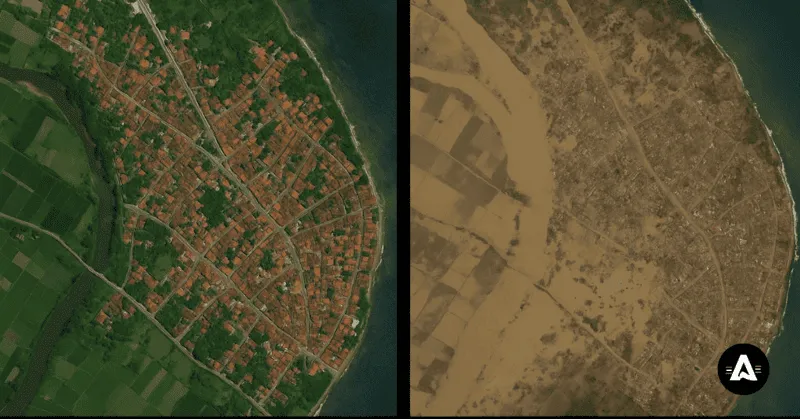
Disaster Management and National Security
Using new tools from the space research organisation has made a big difference in disaster management and keeping the country safe. The Indian Space Research Organisation, also called ISRO, uses its satellites to watch for natural disasters. This work gives people early warnings. It can help save lives and protect the things people own. With remote sensing, the research organisation finds out where the damage is and how bad it is. This helps the people in charge act quickly and do a good job.
Also, with help from satellites, people can stay connected during hard times. This lets the right help reach people when they need it most. As India gets better in space exploration, spending money on these research organisation programs does more than just give safety to the nation. It helps make communities stronger and makes life better for all people, even when something bad like a disaster happens.
Future Projects and Rising Ambitions
Big plans are coming that will help the Indian Space Research Organisation become even more important in space exploration. India might become the first Asian nation to reach some important goals in this area. The Gaganyaan mission will be India’s first space trip with people on board. This is a big step for India in human space travel and in looking at things like black holes. It shows that India is ready to keep growing its cold&page skills in space science for a long time.
At the same time, other missions be sent to look at planets. These will help us learn more about the universe. All these plans will give the research organisation in India a strong name in the world of space science and space exploration. They also make young people feel excited to be part of new ideas. The Indian space research organisation is showing everyone that there is no limit to what people can do in science about space.
Gaganyaan: India’s Crewed Space Mission
Gaganyaan is a big step for the Indian Space Research Organisation (ISRO). The space research organisation is making plans to send people into space. This mission shows the advanced technology the team has built in the country. It highlights the skills that Indian scientists and engineers have grown. These efforts prove that India can handle crewed space missions. There has been a lot of work on launch vehicles and life support systems. That shows ISRO’s focus on safety and getting things right.
Gaganyaan aims to inspire even more people in India to get into science and engineering. This mission is not only about big goals in space exploration. It also shows that the Indian Space Research Organisation wants to boost new research. The research organisation looks to work together with people from other countries. The Gaganyaan space missions show how much the Indian Space Research Organisation wants to help and connect with the world through space research organisation work.
Interplanetary and Deep Space Missions
ISRO has some big plans for its space missions. It sends out the lunar orbiter, mars orbiter mission, and works on deep space missions too. The mars orbiter mission is a good example here. This shows the creativity in the Indian space program and how it can be done for less money. The mission used advanced tools. It helped people find out more about the atmosphere on Mars and if life could be out there. It did all of this for less money than other countries’ space missions in outer space.
Careful spending like this does not lower the quality. It shows how ISRO uses local technology and the resources they have in a smart way. This way of working also helps them get ready for future trips beyond lunar orbit. It makes them stronger for other hard trips in deep space.
Lessons from ISRO for Global Space Programs
The Indian Space Research Organisation (ISRO) is known for saving money in smart ways. This is a big reason why it stands out as a top space research organisation. Teams from other groups doing space research can learn from what ISRO does. ISRO likes to work on things that bring people together. They work with colleges, the space industry, and other people in the field. This shows that when you share what you know, you can get new ideas. They do all of this and still make sure not to spend too much money or go over their budget.
By using smart and easy ways in engineering and giving value to its own technology, ISRO saves a lot of money. This also helps the country to be more independent. These actions show other countries and their space research organisation what they can do. It tells them they do not need a big budget to get good results in outer space and space exploration. This helps space research organisation around the world work better with each other. More countries and new people can join in, making space exploration more open and better for all of us.
Optimizing Costs without Compromising Quality
Cost-saving is at the heart of how the Indian space research organisation works. The research organisation always looks to use less money but still does really good work. By making use of smart engineering and money-saving ideas, the indian space research organisation keeps its quality up while spending less. It uses technology made in India, so it does not have to buy lots of costly things from outside. The space research organisation has small and fast teams that help come up with new ideas and fix problems quickly. This helps make sure that every mission, like the Mars Orbiter and the Mars Orbiter Mission, hits its targets without spending too much. This way of working gives other space agencies an example of how to do things well without extra costs.
Inspiring Emerging Space Nations
ISRO shows there is a smart way to do space exploration. The work by ISRO is a strong example for other new space programs. The people at ISRO put focus on saving money and doing new things with engineering. This tells us that you can get good results in space technology by spending less. The mars orbiter and mars orbiter mission show this well. ISRO used only a little money and just a few things, but the team still made big discoveries. This story inspires many people, even young scientists, all over the world.
Because of this, smaller countries now feel good about what they can do, too. ISRO set up a place where people work with each other and share what they know. This helps the space field grow fast. The good results from ISRO show us all that it is possible to dream big and still use your money in a smart way.
Conclusion
The Indian Space Research Organisation (ISRO) shows that a space research organisation can achieve big things in space exploration without spending a lot of money. This research organisation works hard to use its budget well. Even with a small team, they get great results. This shows that you do not need to spend too much for good work. India keeps moving forward with new and difficult space missions. It is clear that what you do with your money matters. The way this research organisation works helps India be known in the world of space agencies. It also shows other countries starting in space research that they can work on their own space missions and reach their goals.
Frequently Asked Questions
ISRO keeps its mission costs down by using smart and simple engineering. The team is able to manage projects well and use things found in their own country. By working in small groups and also with local schools and companies, ISRO can find new ways to finish missions without spending too much money. This lets the team get good results and not lose out on quality.
As of 2025, ISRO’s budget is around 0.1% of India’s GDP. This shows that the country wants to put time and effort into space exploration. The money helps ISRO get better with new technology and also work with other countries. At the same time, it does not make India spend too much, so the country’s other plans are not affected.
ISRO has faced pressure on its budget, especially when starting big projects like the mars orbiter mission. But the team always finds a way to get good results with what they have. This is because the people there be smart and use cost-effective ways. They also know how to make the best use of their resources. Even when things get tough, ISRO does not have big problems. They keep their promise to keep exploring and to keep finding new ways to do things, like the mars orbiter and other important projects.
ISRO uses its money to help the people in the country. The work that it does with satellite technology makes voice calls, internet, and TV signals better. It also helps get good weather forecasts and better disaster management when there are big storms and floods. These new ideas and ways to use technology help villages grow and make the country safer. I can see that kids in villages now have more ways to learn. All of this brings change that is good for every part of society.
ISRO is looking to the future with many plans. These include Gaganyaan and other deep-space explorations. The goal is to use new, smart ways to do things and get the right partners on board. ISRO wants to keep costs low. So, it looks for the best ways to spend less but still make big moves in space exploration. Even when thinking about their budget, they plan to reach great achievements in this field.

